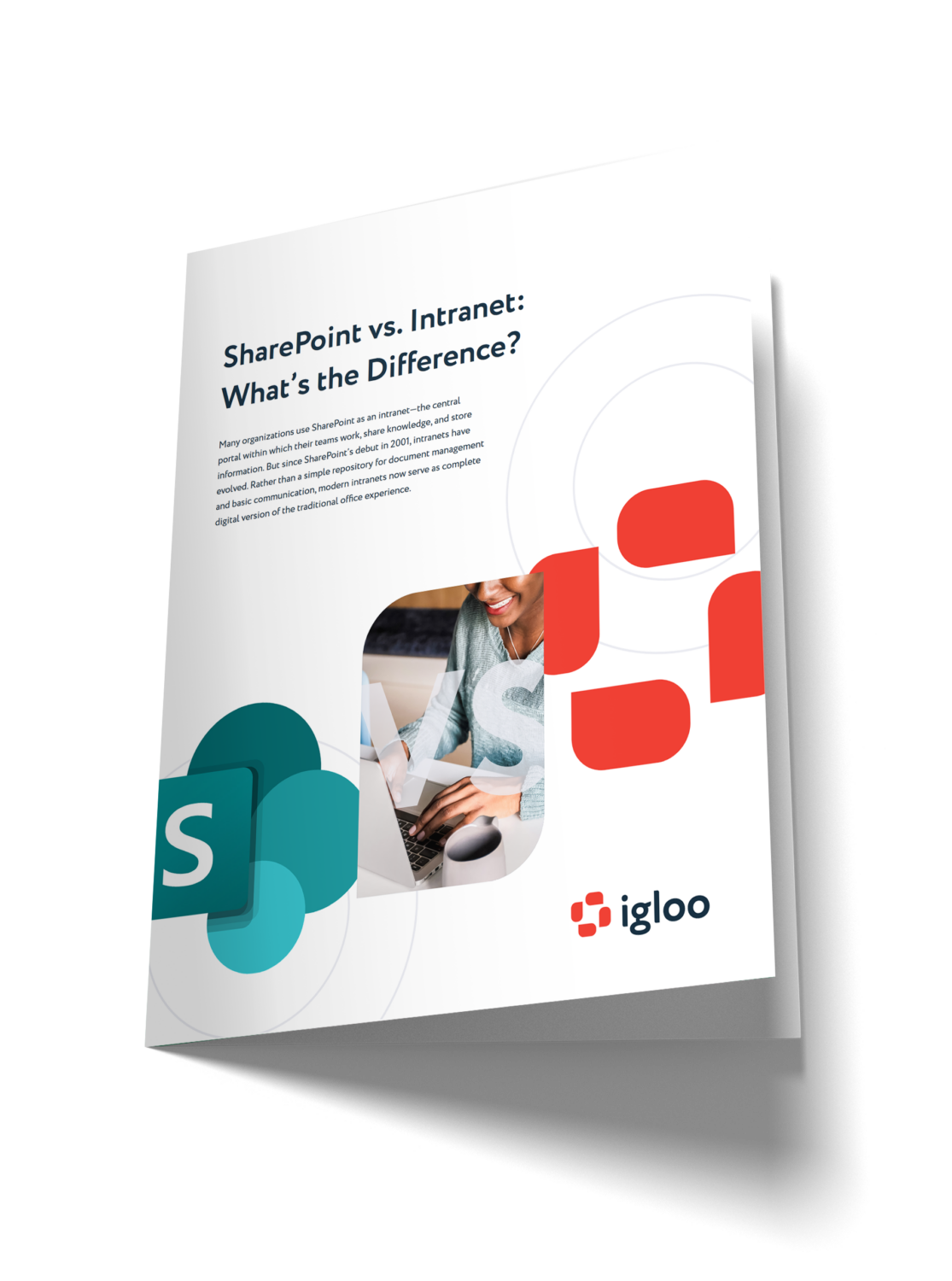Is SharePoint a Viable Solution in the Age of Intranets?
At its most basic, SharePoint is a tool for sharing documents. Modern intranets, on the other hand, have evolved well beyond that. The new generation of intranets goes well beyond the capabilities of SharePoint, extending to all corners of collaboration, communication, culture, and productivity in the workplace.


Microsoft SharePoint has been around since 2001, making it one of the most recognizable names in the game. But with the rising dominance of intranet platforms, is that longevity still an asset?
Let’s examine what SharePoint does, what its limitations are, and where an intranet may have more to offer.
Table of contents
What is SharePoint, and What are its Limitations?
As of 2020, over 200,000 business used SharePoint to support knowledge sharing and basic workplace communications for over 200 million monthly active users. Essentially, SharePoint is a way to store and share your organization’s collective knowledge.
For fans of Microsoft Office, this is a simple but powerful way to collaborate on the many file formats Microsoft has to offer. Ask any IT department, though, and you’ll find that this becomes much less simple as the organization scales.
The greater the demand and the more specific the use-case, the more complicated the task of managing SharePoint becomes. This is only compounded when files need to be accessible to mobile-first users like those on the frontlines.
When the organizational need grows beyond simple file storage and management, the argument for a modern intranet becomes clear.
Is SharePoint an Intranet?
While SharePoint may have been considered an intranet early in its life, intranet solutions have advanced so far that it is no longer accurate to call SharePoint an intranet.
A modern intranet or “digital workplace” still offers a central repository where team members can store, share, and collaborate on documents and other knowledge. That’s just the beginning, though. These digital workplaces are now the anchor for an organization’s culture.
Knowledge is not only stored, but also given new life in an environment that encourages interpersonal interactions through social media-style posts, multichannel communications, and virtual “rooms” where teams and departments can collaborate and strategize.
The versatility of a digital workplace allows organizations to go well beyond the limits of a SharePoint implementation, essentially migrating the best parts of their physical offices to a digital home, accessible by every employee on every device.
Data from Microsoft suggests that 43% of remote workers do not feel included in meetings, and goes on to suggest that an inclusive work environment requires apps that foster broader digital participation. This shows the value of considering the entire employee experience, rather than just focusing on specific digital tools that address isolated functions.
SharePoint is a document management tool; an intranet is a modern way to work.
What does SharePoint do Well?
SharePoint is an excellent document management system, and is effective at connecting other Microsoft products to enable greater collaboration. However, scalability is a major concern, especially in organizations focused on efficiency, with large frontline workforces, or complex integration requirements.
Each new SharePoint user requires a separate license attached to a company email in order to access corporate knowledge. This becomes costly as an organization grows, and it tends to alienate frontline users who don’t have a good way (i.e. a work computer) to participate.
Select modern intranets not only offer a robust desktop portal, but also a tailored mobile app that can be accessed securely without a corporate email account or an individual license. This added flexibility creates role-specific pathways to the wealth of corporate knowledge, communications, and culture.
Likewise, modern intranets integrate easily with the digital tools favored by most organizations, where SharePoint requires costly and time-consuming development work that typically results in a fragmented experience with poor navigability.
This ease of integration derives more value from the tech stack by integrating it into common workflows and by decreasing the barriers to usership for business apps—including SharePoint itself.
Integration: The Best of Both Worlds
The great thing about modern intranet integrations is that they allow businesses to get the best of both worlds—SharePoint for document management, and an intranet that offers every employee equal access to documents, FAQs, wikis, announcements, policies, and so much more.
With the right intranet, every user has access not only to the documents they need, but to role-specific tools and resources ranging from onboarding and training workflows to corporate communications suites.
In such an implementation, SharePoint can do what it does best by organizing documents, while the intranet creates new lines of communication, visibility, and collaboration across departmental lines—even as far as frontline users, who can use mobile apps to join the conversation.
Using a Modern Intranet to Unify People and Information
Whereas SharePoint is designed to distribute documents, industry-leading intranets like Igloo have the inverse approach: to unify all tools, information, and users in a central digital workplace where corporate culture thrives, communications flourish, and compliance isn’t questioned.
By viewing the digital workplace as more than just a place to store information, Igloo builds digital destinations that not only facilitate greater productivity and culture, but which are easier to manage and scale with fewer resources.
Self-serve intranet resources were found to reduce IT support costs, tickets, and administrative overhead by 20%.

To streamline your digital tools and to learn how to take your SharePoint instance into the modern world of work, get in touch with an Igloo product expert today.






